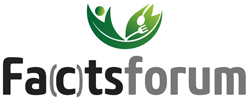Abnormal growth of the face due to mouth breathing
Did you know that if your child grows up breathing through their mouth, their face may develop abnormally? In summary, mouth breathing causes unattractive and unhealthy children.
Please read extracts from medical papers below.
1) ‘116 paediatric patients who had undergone orthodontic treatment. Mouth breathers demonstrated considerable backward and downward rotation of the mandible, increased overjet (buck teeth), increase in the mandible plane angle (longer face), a higher palatal plane (affects upper airways), and narrowing of both upper and lower arches at the level of canines and first molars compared to the nasal breathers group (overcrowding of teeth). The prevalence of a posterior cross bite was significantly more frequent in the mouth breathers group (49%) than nose breathers (26%)(P = .006). Abnormal lip-to-tongue anterior oral seal was significantly more frequent in the mouth breathers group (56%) than in the nose breathers group (30%).’ Doron Harari DMD et al. 2010 The effect of mouth breathing versus nasal breathing on dentofacial and craniofacial development in orthodontic patients. The American Laryngological, Rhinological, and Otological Society, Inc. 2010 Oct;120(10):2089-93.
http://www.ncbi.nlm.nih.gov/pubmed/20824738
2) ‘a mouth breather lowers the tongue position to facilitate the flow of air in to the expanding lungs. The resultant effect is maldevelopment of the jaw in particular and deformity of the face in general. Setting of the teeth on the jaw is also affected. All these make the face look negative.’ Care of nasal airway to prevent orthodontic problems in children J Indian Med association 2007 Nov; 105 (11):640,642)
http://www.ncbi.nlm.nih.gov/pubmed/18405091
3) ‘the switch from a nasal to an oronasal (mouth and nose combined) breathing pattern induces functional adaptations that include an increase in total anterior face height and vertical development of the lower anterior face’ Tourne. The long face syndrome and impairment of the nasopharyngeal airway. Angle Orthod 1990 Fall 60(3) 167- 76
http://www.ncbi.nlm.nih.gov/pubmed/2202236
4) ‘Long-standing nasal obstruction appears to affect craniofacial morphology during periods of rapid facial growth in genetically susceptible children with narrow facial pattern.’ ‘The deleterious effects of nasal obstruction are virtually complete by puberty so the window of opportunity is relatively brief. Delay in intervention may result in unsuccessful orthodontic treatment which may require surgery at an older age.’ ‘Effective orthodontic therapy may require the elimination of the nasal obstruction to allow for normalization of the facial musculature surrounding the dentition.’ Schreiner C (1996) Nasal air way obstruction in children and secondary dental deformities. UTMB, Dept. of Otolaryngology, G rand Rounds Presentation
http://www.utmb.edu/otoref/grnds/nasala.htm
5) In a study of 47 children between the ages of six to 15 years to determine the correlation between breathing mode and craniofacial morphology, ‘findings demonstrated a significant predominance of mouth breathing compared to nasal breathing in the vertical growth patterns studied. Results show a correlation between obstructed nasal breathing, large adenoids and vertical growth pattern.’ Baumam I, Plindert PK (1996) Effect of breathing mode and nose ventilation on growth of the facial bones. HNO 44(5): 229-34
http://www.ncbi.nlm.nih.gov/pubmed/8707626
6) Children with obligate mouth-breathing due to nasal septum deviations show facial and dental anomalies in comparison to nose-breathing controls. Int J Pediatr Otorhinolaryngol. 2010 Oct;74(10):1180-3. Craniofacial growth in children with nasal septum deviation: a cephalometric comparative study. D'Ascanio L, Lancione C, Pompa G, Rebuffini E, Mansi N, Manzini M.
http://www.ijporlonline.com/article/S0165-5876(10)00312-5/abstract
7) A study of 73 children between the ages of three and six years concluded that ‘mouth breathing can influence craniofacial and occlusal development early in childhood ’ Mattar SE et al (2004) Skeletal and occlusal characteristics in mouth-breathing pre-school children. J Clin Pediatr Dent 28(4): 315-318
http://www.ncbi.nlm.nih.gov/pubmed/15366619
8) ‘The main characteristics of the respiratory obstruction syndrome (blocked nose) are presence of hypertrophied tonsils or adenoids, mouth breathing, open bite, cross bite, excessive anterior face height, incompetent lip posture, excessive appearance of maxillary anterior teeth, narrow external nares and V-shaped maxillary arch.’ Lopatiene K, Babarsk as A (2002) Malocclusion and upper airway obstruction. Medicina 38(3): 277-283
http://www.ncbi.nlm.nih.gov/pubmed/12663102
9) “Lack of growth affects the whole face and is associated with flat cheeks, unattractive lips, large noses, tired eyes, double chin, receding chins and sloping forehead, features that will be readily recognised when there is a pronounced crowding of teeth.” (Mew JR C, 1986)
http://www.buteykoclinic.com/normal-cranio-facial-development.html
10) The nose will seem larger, similar to that of a roman nose. The ‘nose is more pronounced in an ideal occlusion but in the various malocclusions where the maxilla is underdeveloped it appears larger, although in fact it is smaller ’ (Mew JR C, 1986).
http://www.buteykoclinic.com/normal-cranio-facial-development.html
11) “Children whose mouth breathing is untreated may develop long, narrow faces, narrow mouths, high palatal vaults, dental malocclusion (crooked teeth), gummy smiles and many other unattractive facial features.” General dentist: Mouth breathing: adverse effects on facial growth, health, academics and behaviour. Jefferson Y, 2010 Jan- Feb; 58 (1): 18-25
http://www.ncbi.nlm.nih.gov/pubmed/20129889
12) ‘Clinical and cephalometric data of 207 children who presented for evaluation of tonsil and/or adenoid problems were evaluated. Specifically, a more open lip posture was associated with a more backwardly rotated face and larger lower facial height. Reduced sagittal airway size was associated with en bloc backward relocation of the maxilla and mandible.’
Trotman CA, McNamara JA Jr, Dibbets JM, van der Weele LT. (1997) Association of lip posture and the dimensions of the tonsils and sagittal airway with facial morphology. The Angle Orthodontist 1997;67(6):425-32.
http://www.ncbi.nlm.nih.gov/pubmed/9428960
13) In a dreadful study involving monkeys who were forced to breathe through their mouths; ‘The experiments showed that the monkeys adapted to nasal obstruction in different ways. In general, the experimental animals maintained an open mouth. All experimental animals gradually acquired a facial appearance and dental occlusion different from those of the control animals.’ All the mouth breathing monkeys developed craniofacial changes and crooked teeth. Egil P Harvold. Primate experiments on oral respiration. American Journal of orthodontics. Volume 79, issue 4, April 1981, pages 359- 372)
http://www.ncbi.nlm.nih.gov/pubmed/6939331
14) The mouth-breathing monkeys developed crooked teeth and other facial deformities, including “a lowering of the chin, a steeper mandibular plane angle, and an increase in the gonial angle as compared with the eight control animals.” Tomer, Harvold Ep. 1982 Primate experiments on mandibular growth direction. Am J Orthod 1982 Aug: 82 (2): 114-9
http://www.sciencedirect.com/science/article/pii/0002941682904900
15) ‘His granddaughter had pinched nostrils and narrowed face. Her dental arches were deformed and her teeth crowded. She was a mouth breather. She had the typical expression of the result of modernisation after the parents had adopted the modern foods of commerce, and abandoned the oatcake, oatmeal porridge and sea foods.’
Dr Weston Price Nutrition and physical degeneration. Price Pottenger Nutrition; 8th edition (January 31, 2008)
16) Study of 26 children, Kerr showed how development of the lower jaws began to normalise after they switched from mouth to nasal breathing Kerr WJ, McWilliam s JS, et al. Mandibular form and position related to changes mode of breathing – a five year longitudinal study. Angle Orthod 1987;59:91-96
http://www.ncbi.nlm.nih.gov/pubmed/2729669
17) A good-looking face is determined by a strong, sturdy chin, developed jaws, high cheekbones, good lips, correct nose size and straight teeth. When a face develops correctly, it follows that the teeth will be straight. Straight teeth do not create a good-looking face, but a good-looking face will create straight teeth. Patrick McKeown 2010 Buteyko meets Dr Mew Conclusion ‘If mouth breathing is treated early, its negative effect on facial and dental development and the medical and social problems associated with it can be reduced or averted.’ General dentist: Mouth breathing: adverse effects on facial growth, health, academics and behaviour. Jefferson Y, 2010 Jan- Feb; 58 (1): 18-25
http://www.ncbi.nlm.nih.gov/pubmed/20129889 http://www.buteykoclinic.com/breathe-through-your-nose-week.html







